Kai Zhang
from San Jose, CA
Kai Zhang Phones & Addresses
- San Jose, CA
Us Patents
-
Composite Low Dielectric Constant Film For Integrated Circuit Structure
view source -
US Patent:6492731, Dec 10, 2002
-
Filed:Jun 27, 2000
-
Appl. No.:09/605380
-
Inventors:Wilbur G. Catabay - Saratoga CA
Wei-Jen Hsia - Sunnyvale CA
Kai Zhang - San Jose CA -
Assignee:LSI Logic Corporation - Milpitas CA
-
International Classification:H01L 2348
-
US Classification:257758, 257760, 257411
-
Abstract:A composite layer of low k dielectric material for integrated circuit structures comprising a thick lower conformal barrier layer of low k dielectric material, a low k center layer of carbon-doped silicon oxide dielectric material having good gap filling capabilities, and a thick upper conformal barrier layer of low k dielectric material. The thick lower conformal barrier layer of low k dielectric material protects the lower surface of the main low k dielectric layer and also protects against misaligned vias entering the main low k dielectric material below the height of the metal line without raising the capacitance of the structure as would a lower barrier layer of non-low k dielectric material. The thick upper conformal barrier layer of low k dielectric material protects the upper surface of the main low k dielectric layer, as well as to provide thickness for vias to pass through without risk of via poisoning, and without raising the capacitance of the structure as would a thick upper barrier layer of non-low k dielectric material.
-
Process For Forming Metal-Filled Openings In Low Dielectric Constant Dielectric Material While Inhibiting Via Poisoning
view source -
US Patent:6503840, Jan 7, 2003
-
Filed:May 2, 2001
-
Appl. No.:09/848758
-
Inventors:Wilbur G. Catabay - Saratoga CA
Wei-Jen Hsia - Sunnyvale CA
Yong-Bae Kim - Cupertino CA
Kiran Kumar - Sunnyvale CA
Kai Zhang - Saratoga CA
Richard Schinella - Saratoga CA
Philippe Schoenborn - San Mateo CA -
Assignee:LSI Logic Corporation - Milpitas CA
-
International Classification:H01L 21302
-
US Classification:438694, 438699, 438700, 438702, 438709, 438718, 438725
-
Abstract:A composite layer of dielectric material is first formed over the integrated circuit structure, comprising a thin barrier layer of dielectric material, a layer of low k dielectric material over the barrier layer, and a thin capping layer of dielectric material over the layer of low k dielectric material. A photoresist mask, formed over the capping layer, is baked in the presence of UV light to cross-link the mask material. The composite layer is then etched through the resist mask using an etchant gas mixture including CO, but not oxygen. Newly exposed surfaces of low k dielectric material are then optionally densified to harden them. The resist mask is then removed using a plasma of a neutral or reducing gas. Exposed surfaces of low k dielectric material are then passivated by a low power oxygen plasma. Preferably, optional densification, mask removal, and passivation are all done in the same vacuum apparatus.
-
Processing For Forming Integrated Circuit Structure With Low Dielectric Constant Material Between Closely Spaced Apart Metal Lines
view source -
US Patent:6559033, May 6, 2003
-
Filed:Jun 27, 2001
-
Appl. No.:09/892250
-
Inventors:John Rongxiang Hu - San Jose CA
Kai Zhang - Saratoga CA
Senthil K. Arthanari - San Jose CA -
Assignee:LSI Logic Corporation - Milpitas CA
-
International Classification:H01L 2176
-
US Classification:438444, 438622, 438623, 438692, 438733, 438597
-
Abstract:Protective caps are formed over horizontally closely spaced apart metal lines of an integrated circuit structure. Low k silicon oxide dielectric material is then deposited over and between the metal lines and over protective caps on the lines. After the formation of such low k material between the lines and over the caps, standard k dielectric material is deposited over the low k layer as a planarizing layer over low portions of the low k layer between the lines which may be lower than the top of the caps on the lines to prevent further etching or dishing of the low k layer of during planarizing. The structure is then planarized to bring the low k dielectric material down to the tops of the protective caps on the metal lines. A layer of standard k silicon material is then formed over the planarized low k layer and the caps to allow via formation without passing through the low k layer to avoid via poisoning.
-
Method Of Making A Sloped Sidewall Via For Integrated Circuit Structure To Suppress Via Poisoning
view source -
US Patent:6559048, May 6, 2003
-
Filed:May 30, 2001
-
Appl. No.:09/870851
-
Inventors:Yong-Bae Kim - Cupertino CA
Philippe Schoenborn - San Mateo CA
Kai Zhang - Saratoga CA -
Assignee:LSI Logic Corporation - Milpitas CA
-
International Classification:H01L 214763
-
US Classification:438637, 438638, 438639, 438640, 438666, 438668
-
Abstract:Via poisoning of vias formed in low k carbon-containing silicon oxide dielectric material is suppressed by forming the via in a layer of such dielectric material with a smooth inwardly sloped sidewall. Such a sloped sidewall via can be etched in a low k dielectric layer by first forming a via resist mask over the upper surface of such a dielectric layer, then heat treating the mask sufficiently to deform the sidewall geometry of the resist mask to form a sloped sidewall on the opening or openings in the heat treated resist mask. The resulting erosion of such a resist mask, during a subsequent etch step to form the via in the low k dielectric material through such a sloped sidewall resist mask, imparts a tapered or sloped sidewall geometry to the via which is then formed in the underlying layer of low k dielectric material. In a preferred embodiment, when the via is cut through several layers of different types of dielectric material, the smoothness of the sloped sidewall of the resulting via is enhanced by adjusting the selectivity of the via etch to uniformly etch each of the layers of dielectric material at approximately the same rate.
-
Method Of Preventing Resist Poisoning In Dual Damascene Structures
view source -
US Patent:6713386, Mar 30, 2004
-
Filed:Dec 19, 2001
-
Appl. No.:10/025304
-
Inventors:Rongxiang Hu - San Jose CA
Yongbae Kim - Cupertino CA
Sang-Yun Lee - Stanford CA
Hiroaki Takikawa - Chagasaki, JP
Shumay Dou - Saratoga CA
Sarah Neuman - San Mateo CA
Philippe Schoenborn - San Mateo CA
Keith Chao - Saratoga CA
Dilip Vijay - Foster City CA
Kai Zhang - Saratoga CA
Masaichi Eda - Gresham OR -
Assignee:LSI Logic Corporation - Milpitas CA
-
International Classification:H01L 214763
-
US Classification:438639, 438660, 438633
-
Abstract:A method for forming a dual damascene interconnect in a dielectric layer is provided. Generally, a first aperture is etched in the dielectric. A poison barrier layer is formed over part of the dielectric, which prevents resist poisoning. A patterned mask is formed over the poison barrier layer. A second aperture is etched into the dielectric layer, wherein at least part of the first aperture shares the same area as at least part of the second aperture.
-
Channel Power Monitor
view source -
US Patent:6735372, May 11, 2004
-
Filed:Jun 4, 2002
-
Appl. No.:10/163153
-
Inventors:Dennis Chi Zhou - Cupertino CA
Kai Zhang - San Jose CA -
Assignee:Arasor Corporation - Mountain View CA
-
International Classification:G02B 600
-
US Classification:385140, 385147
-
Abstract:The present invention is directed towards a channel power monitor for monitoring channel power levels for each of N signal channels. The value of each channel power level is designated as p( ), where is a channel parameter that characterizes each channel. An embodiment of the invention includes a variable channel attenuator having M attenuation profiles where M N, and where a k-th attenuation profile is characterized as a function of the channel parameter by A ( ). This embodiment also includes a detector for measuring a k-th integrated attenuated power level, the value of which is represented by P. An analysis unit receives all of the values P of the integrated attenuated power levels and thereupon derives the values p( ) of the channel power levels by solving a set of linear equations.
-
In Situ Liner Barrier
view source -
US Patent:6767832, Jul 27, 2004
-
Filed:Apr 27, 2001
-
Appl. No.:09/844352
-
Inventors:Kiran Kumar - Sunnyvale CA
Zhihai Wang - Sunnyvale CA
Wilbur G. Catabay - Saratoga CA
Kai Zhang - Saratoga CA -
Assignee:LSI Logic Corporation - Milpitas CA
-
International Classification:H01L 21302
-
US Classification:438689, 438700, 438706, 438710, 438712
-
Abstract:A method of processing a substrate, where the substrate is transferred from an ambient environment into a clean environment. The substrate is heated to at least a first temperature within the clean environment, and then maintained at no less than the first temperature within the clean environment. The substrate is selectively transferred within the clean environment to more than one processing chambers, and processed in the more than one processing chambers. The substrate is transferred from the clean environment into the ambient environment.
-
Method Of Preventing Resist Poisoning In Dual Damascene Structures
view source -
US Patent:6969683, Nov 29, 2005
-
Filed:Dec 31, 2003
-
Appl. No.:10/750348
-
Inventors:Rongxiang Hu - San Jose CA, US
Yongbae Kim - Cupertino CA, US
Sang-Yun Lee - Stanford CA, US
Hiroaki Takikawa - Chagasaki, JP
Shumay Dou - Saratoga CA, US
Sarah Neuman - San Mateo CA, US
Philippe Schoenborn - San Mateo CA, US
Keith Chao - Saratoga CA, US
Dilip Vijay - Foster City CA, US
Kai Zhang - Saratoga CA, US
Masaichi Eda - Gresham OR, US -
Assignee:LSI Logic Corporation - Milpitas CA
-
International Classification:H01L021/311
-
US Classification:438697, 438700, 438639
-
Abstract:A method for forming a dual damascene interconnect in a dielectric layer is provided. Generally, a first aperture is etched in the dielectric. A poison barrier layer is formed over part of the dielectric, which prevents resist poisoning. A patterned mask is formed over the poison barrier layer. A second aperture is etched into the dielectric layer, wherein at least part of the first aperture shares the same area as at least part of the second aperture.
Real Estate Brokers

Kai Zhang
view sourceSpecialties:
Buyer's Agent
Listing Agent
Listing Agent
License Records
Kai Zhang
License #:
25MA08500400 - Expired
Category:
Medical Examiners
Type:
Medical Doctor
Kai Zhang
License #:
25MA08500400 - Expired
Category:
Medical Examiners
Type:
Medical Doctor
Wikipedia

Zhang Kai
view sourceZhang Kai (), (born December 1, 1982) is a professional basketball player from China. A center, he plays for the Dongguan Leopards of the Chinese ...
Resumes

Sales Director
view sourceLocation:
San Francisco, CA
Industry:
Telecommunications
Work:
NeoPhotonics since 2005
Director
Director
Education:
University of Science and Technology of China
Bachelor of Science (BS), Physics
Bachelor of Science (BS), Physics
Skills:
Dwdm
Fiber Optics
Optics
Telecommunications
Optical Fiber
Wireless
Testing
Ethernet
Sdh
Rf
Fiber Optics
Optics
Telecommunications
Optical Fiber
Wireless
Testing
Ethernet
Sdh
Rf

Software Engineer
view sourceLocation:
San Jose, CA
Industry:
Computer Software
Work:
Facebook
Software Engineer
Cisco Nov 2014 - Feb 2017
Software Engineer
Cisco Aug 2013 - Nov 2014
Software Engineer Intern
Taobao Marketplace May 2013 - Jul 2013
Software Develop Intern
Software Engineer
Cisco Nov 2014 - Feb 2017
Software Engineer
Cisco Aug 2013 - Nov 2014
Software Engineer Intern
Taobao Marketplace May 2013 - Jul 2013
Software Develop Intern
Education:
Zhejiang University 2012 - 2014
Masters, Master of Engineering, Engineering, Software Engineering Xidian University 2008 - 2012
Bachelor of Engineering, Bachelors, Engineering, Software Engineering
Masters, Master of Engineering, Engineering, Software Engineering Xidian University 2008 - 2012
Bachelor of Engineering, Bachelors, Engineering, Software Engineering
Skills:
Python
C++
Php
C
Linux
Programming
Javascript
Algorithms
Web Applications
Hadoop
Algorithm
Ceph
Html
Sql
Go
C++
Php
C
Linux
Programming
Javascript
Algorithms
Web Applications
Hadoop
Algorithm
Ceph
Html
Sql
Go
Languages:
English
Mandarin
Mandarin

Kai Zhang
view source
Kai Zhang
view source
Kai Zhang
view source
Kai Zhang
view source
Kai Zhang
view source
Analyst At Barclays Capital
view sourcePosition:
Analyst at Barclays Capital
Location:
New York, New York
Industry:
Financial Services
Work:
Barclays Capital - Greater New York City Area since Jul 2011
Analyst
Nobilis Capital - Greater New York City Area Oct 2010 - Mar 2011
Quant Intern, High Frequency Trading
Ashir Capital - Greater New York City Area May 2010 - Aug 2010
Summer analyst
Analyst
Nobilis Capital - Greater New York City Area Oct 2010 - Mar 2011
Quant Intern, High Frequency Trading
Ashir Capital - Greater New York City Area May 2010 - Aug 2010
Summer analyst
Education:
New York University 2009 - 2011
MS, Financial Engineering Nankai University 2005 - 2009
Bacherlor, Financial Engineering
MS, Financial Engineering Nankai University 2005 - 2009
Bacherlor, Financial Engineering
Skills:
C++
R
Matlab
VBA
Options Pricing
Market Risk
Options
Derivatives
R
Matlab
VBA
Options Pricing
Market Risk
Options
Derivatives
Interests:
Systematic Trading, Web Technology, Cloud Computing.
Certifications:
Financial Risk Manager Holder, GARP
Medicine Doctors

Kai Zhang
view sourceSpecialties:
Anatomic Pathology & Clinical Pathology
Work:
Geisinger Medical GroupGeisinger Laboratory Medicine
100 N Academy Ave, Danville, PA 17822
570 271-6338 (phone), 570 271-6105 (fax)
100 N Academy Ave, Danville, PA 17822
570 271-6338 (phone), 570 271-6105 (fax)
Education:
Medical School
Fujian Med Coll, Fuzhou City, Fujian, China
Graduated: 1984
Fujian Med Coll, Fuzhou City, Fujian, China
Graduated: 1984
Languages:
Chinese
English
Spanish
English
Spanish
Description:
Dr. Zhang graduated from the Fujian Med Coll, Fuzhou City, Fujian, China in 1984. He works in Danville, PA and specializes in Anatomic Pathology & Clinical Pathology. Dr. Zhang is affiliated with Cole Memorial Hospital, Geisinger Medical Center, Geisinger Wyoming Valley Hospital and Geisinger-Shamokin Area Community Hospital.

Kai Zhang
view sourceName / Title
Company / Classification
Phones & Addresses
Administrator
United Realty Inc
Real Estate Agents and Managers
Real Estate Agents and Managers
7979 Soquel Drive, Aptos, CA 95003
Administrator
United Realty Inc
7979 Soquel Dr, Aptos, CA 95003
301 738-7900
301 738-7900
President
A & K QUARTZ, INC
Ret Jewelry
Ret Jewelry
7369 Wildflower Way, Cupertino, CA 95014
1615 Almond Way, Morgan Hill, CA 95037
408 779-8522
1615 Almond Way, Morgan Hill, CA 95037
408 779-8522
President
HORIZONTAL TECHNOLOGIES, INC
4025 Ribbon Dr, San Jose, CA 95130
Flickr
Classmates

Zhang Kai, Lutheran High ...
view source
Lutheran High School, Met...
view sourceGraduates:
Jennifer Foret (1993-1997),
Patricia Dearman (1983-1984),
Abby Mayeaux (1994-1998),
Zhang Kai (1999-2003),
Jason Leone (1992-1996)
Patricia Dearman (1983-1984),
Abby Mayeaux (1994-1998),
Zhang Kai (1999-2003),
Jason Leone (1992-1996)

Zhang Kai Hui
view source
Zhang Kai Jian
view source
Zhang Kai
view source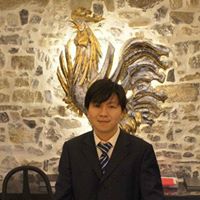
Kai Young Zhang
view source
Kai Li Zhang
view source
Kai Kiki Zhang
view source
Wei Kai Zhang
view source
Kai Zhang
view sourceGoogleplus
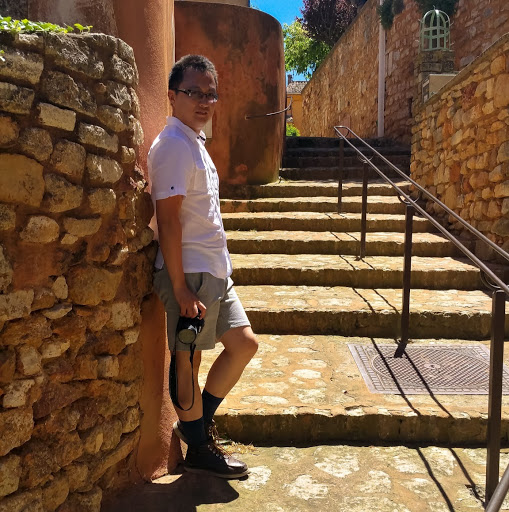
Kai Zhang
Work:
Mizuho Corporate Bank - Quantitative Analyst (2010)
Education:
Warwick Business School - PhD in Financial Mathematics, Warwick Business School - MSc in Financial Mathematics
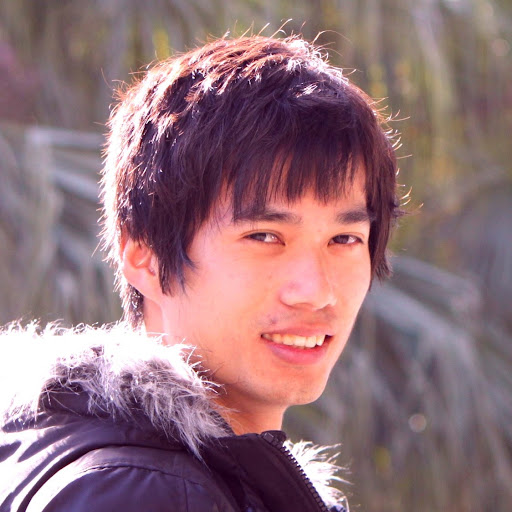
Kai Zhang
Work:
National University of Singapore - Research Assistant (2012)
Education:
Xiamen University - Biochemistry and Molecular Biology, Xiamen University - Biological Sciences
Tagline:
Home Page: http://zk65900931.gicp.net/zk
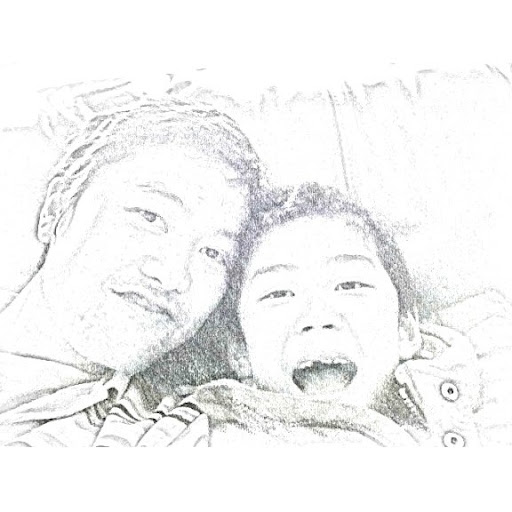
Kai Zhang
Work:
Fidessa - I&S specailist (2004)
Education:
University of Manchester - Computer science
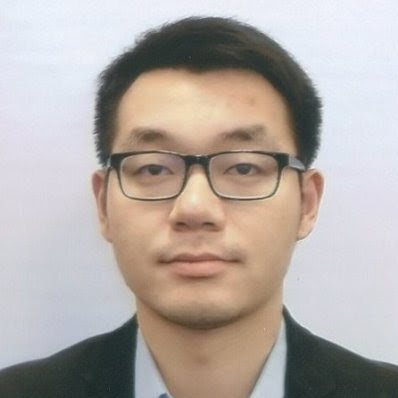
Kai Zhang
Education:
University of Texas at Austin, McCombs School of Business
Tagline:
Asian...nerdy... geeky... lol

Kai Zhang
Education:
University of Science and Technology of China - Computer Science and Technology
Tagline:
I am a fool

Kai Zhang
Education:
Emory University - Chemistry and Economics

Kai Zhang
Education:
Purdue University

Kai Zhang
Work:
Pennsylvania State University - PhD Student
Plaxo

Kai Zhang
view sourceHKsenior coordinator at Penway Industries Past: general manager at CatchWin Trading GmbH

zhang kai
view sourceSEO at EWT
Youtube
Myspace
Get Report for Kai Zhang from San Jose, CA























